Looking for a inexpensive blaster with a legendary reputation for reliability, close ties to history and an appetite for inexpensive hard-hitting rounds? How about a diehard bug out gun with more than 60 years of battlefield-proven effectiveness chambered in a round with ballistics close to a 30-30? The answer is the same but also different. The AKM. With enough variants to fill countless tomes of information, buying an AK can be an overwhelming experience. Thankfully, shooters can simplify it by answering a few simple questions on what they expect and need out of their first Soviet lead-slinger.
The first thing shooters should do when deciding on a Kalashnikov rifle is figure out what they want to do with their AK. Most would-be AK buyers fit into one of two categories: practical shooters and shooters in love with the idea of an AK-47.
The former group has a much easier time buying a first rifle because certain variants objectively perform better than others. The second group is more tricky, since they’ll have to decide what a “true” AK is to them. Fortunately, there are a number of excellent options to choose from for either of these groups. We’re going to look at a few select rifles that might be considered “high-end” performance AKs as well as a few bare-bones AKs. And finally, there are a couple of American-made AKs that fall more toward the “performance” end of the spectrum but with more of a bias toward modularity.
Performance AKs
If you count yourself among the form follows function group, your choices are narrowed to three companies: Arsenal, Izhmash and Molot. Depending on which aspect of the rifle’s performance is most important to a shooter, they can further hone this selection down to a single company.
Russian VEPR
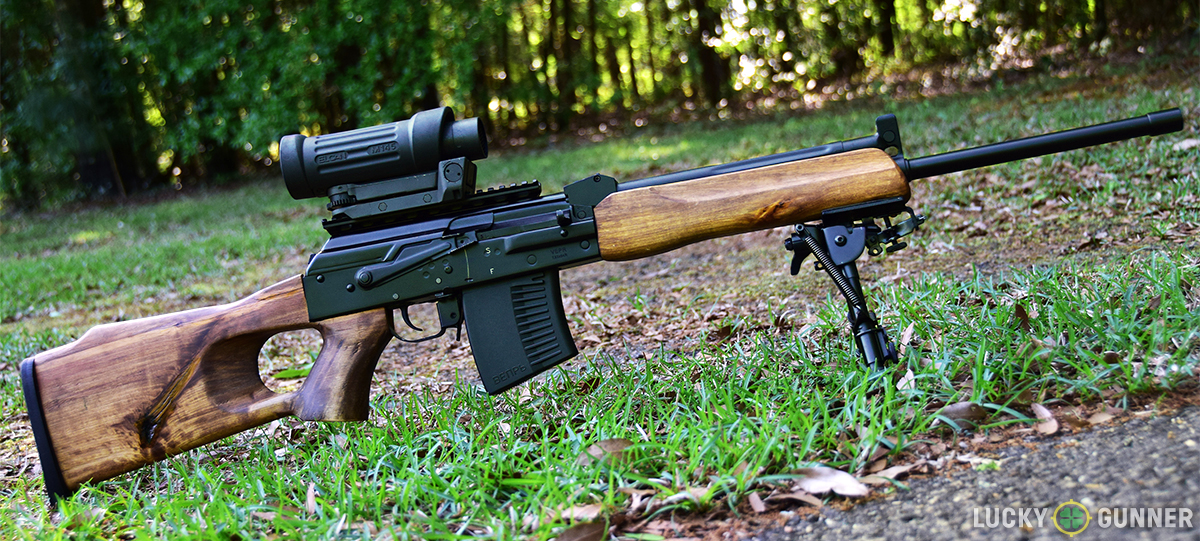
If accuracy is the most important property for your ideal AK, a Molot VEPR is the ideal rifle for you. Built on the same heavy-duty receiver as the Russian military’s RPK, a light machine gun, the VEPR is built to standards far exceeding those of mil-spec rifles. Additionally, VEPR rifles use heavier barrel profiles, and are available in multiple barrel lengths. The problem with VEPR rifles is the cost of ownership, and limited aftermarket support.
Due to the design of its handguard and receiver, the Molot VEPR uses its own proprietary furniture and magazines. So unlike shooters who opt for a mil-spec gun, VEPR-owners won’t have access to the robust, inexpensive parts market. The rifle can be modified to utilize standard AK-47/AKM magazines, but this requires some mechanical knowhow as well as the legal savviness to ensure the rifle then meets the requirements of 922r.
Russian Saiga
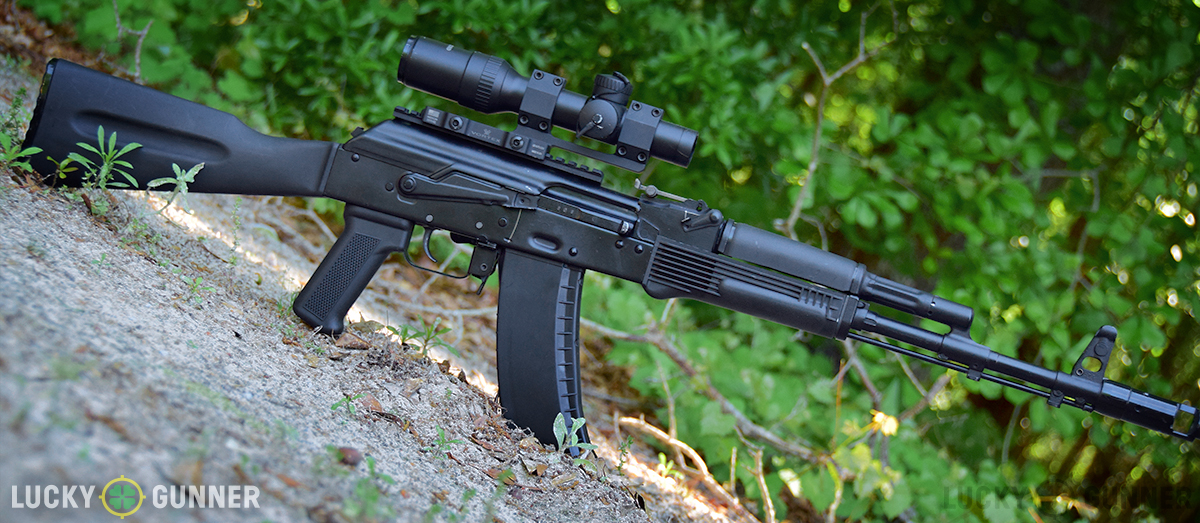
Practical shooters who want a thoroughbred Russian AK rifle should pick up an Izhmash Saiga rifle converted by a reputable AK builder. A couple of those builders are Arsenal of Las Vegas, Kreb’s Customs or Legion USA. Since the recent ban of further imports, this is going to be a more costly option than in years past. Though given their Russian heritage and ever-shrinking supply, these rifles will undoubtedly increase in value if properly maintained.
If cost of ownership and parts compatibility isn’t important to you, you can leave the Saiga in its imported, hunting configuration. These shooters are restricted to low-capacity magazines and have limited furniture options, since the trigger assembly is located further back than standard AK rifles.
While standard capacity magazines do exist for unconverted Saiga carbines, it’s illegal for shooters to use them without first ensuring they have enough US-made parts to meet 922r compliance.
Bulgarian SLR
This leaves one final option for performance junkies; Arsenal of Las Vegas. Arsenal builds and imports AK-pattern rifles from Russia and Bulgaria.
Arsenal may be best known for their SLR-series of Bulgarian carbines, which are near-perfect facsimiles of their full-auto brethren. These rifles are on par with Saiga carbines in terms of fit, finish and accuracy – though both are slightly inferior to VEPR rifles. Though cost of ownership on both Arsenal and converted Izhmash rifles is exceptionally low; most magazines are under $20 and only the folding-stock variants of either require special parts. The fixed-stock versions of both utilize standard AKM-pattern furniture which is both plentiful and inexpensive.
One additional bonus for shooters living in areas with an assault weapons ban in place is that pre-ban magazines are plentiful for AKM rifles, and thus both of these guns.
Form vs. Function vs. Price
The reason people who want a traditional AK might not want any of the above rifles, deals primarily with their furniture types. Where most people imagine a wood-stocked, all-steel war-machine when imagining an AK-47, modern examples of the rifle utilize polymer furniture instead. Which is objectively superior in terms of performance and weight savings, though is detracts from the classic AK appearance. Another reason shooters might shy away from these three markers is price.
Most buyers assume AK rifles are inexpensive, crudely-made weapons. Extrapolating that their rugged appearance and loose tolerances are responsible for the carbine’s legendary reliability and affordability in the past. But this couldn’t be any further from the truth. The AK rifles of yesteryear were affordable because they were constructed by a country that had inexpensive labor costs and previously-existing machinery for the guns. That lowered the price of the units, since they were cheap to produce and cheap to tool up for.
This is important because shooters looking at more recent offerings from Arsenal or Legion while only hearing internet legends of $60 SKS rifles and $99 Norinco MAK-90s will experience sticker shock. Most Arsenal AK rifles are close to or exceed $1000.
Are they worth it? I believe so, but I like owning a gun that not only runs reliability, but also hits what I’m aiming at while providing peace of mind that I’ve purchased a military-grade AK.
Bare Bones AKs
What about shooters who simply want to plink or have a man-accurate carbine out to 200 yards?
These shooters are part of the earlier group mentioned, those in love with the idea of an AK rifle. There’s nothing wrong with that, my first semi-automatic rifle was a Romanian WASR-10. I purchased it because of its reputation for reliability, and because it looked cool as hell.
So for shooters who either want a classic AK or simply a more affordable option, there are several makes available. Since several builders offer their services using American-made receivers and foreign part kits, I’m going to recommend rifles based on the origin of their parts kit and their builder; since both are equally important.
While the Soviet Union has several satellite nations it saw fit to equip with Avtomats, only a handful have been imported to the US in substantial numbers. Other variants do exist, but they are often much more expensive because of their rarity, not increased quality. That said any of the following make for good, reliable weapons if properly assembled.
Romanian WASR
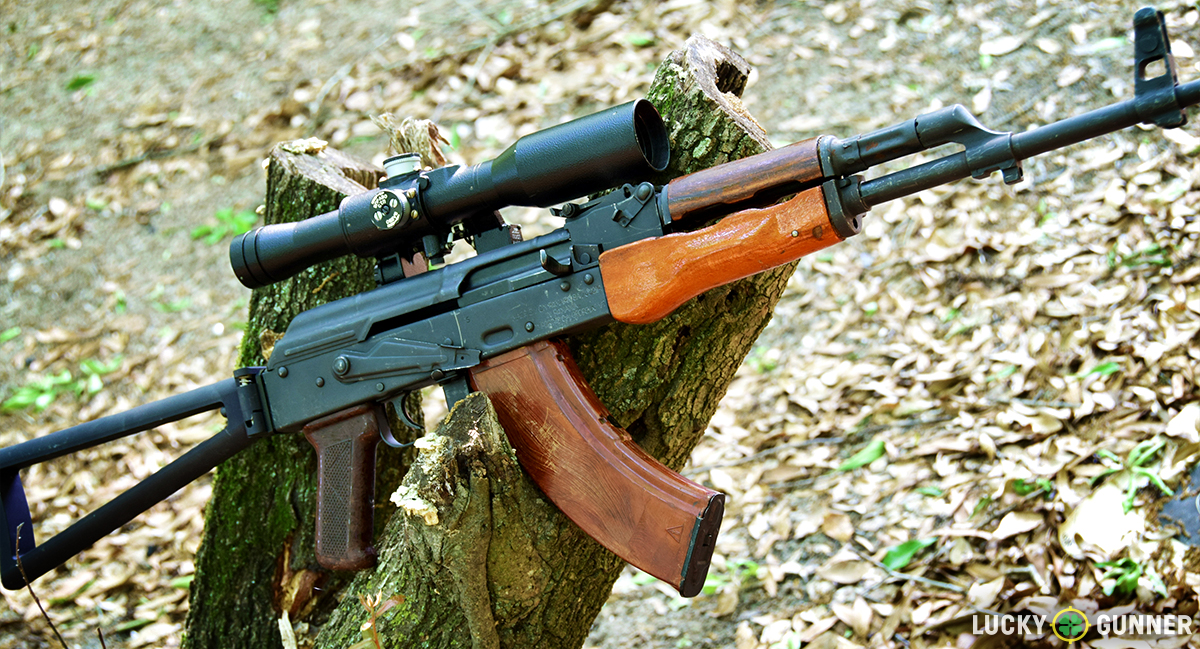
The least expensive classic-appearance option is the most prolific semi-automatic Kalashnikov-pattern rifle in the United States, the WASR, or Wassenaar Arrangement Semiautomatic Rifles. Notorious for their inaccuracy and poor build quality, these rifles are responsible for the majority of the internet myths surrounding imported AK rifles today.
Just like everything else on the net, the reports surrounding them are grossly exaggerated and often totally incorrect. While it’s true that many of the rifles imported by Century Arms suffered from canted iron sights, this wasn’t due to anything Century themselves did. Most people fail to realize that during the height of the purported built issues, Century simply widened the magazine well for double-stack mags, and never touched the barrel or sights.
Still, this reflects poorly on the rifle’s reputation, and rightfully so. Older builds from around the year 2001, were hurriedly built once the AWB ended, in anticipation of huge orders. Newer models rarely suffer from canted sights or severe magazine wobble, but shooters should closely inspect any WASR they intend to buy in person, if possible.
Serbian N-PAP
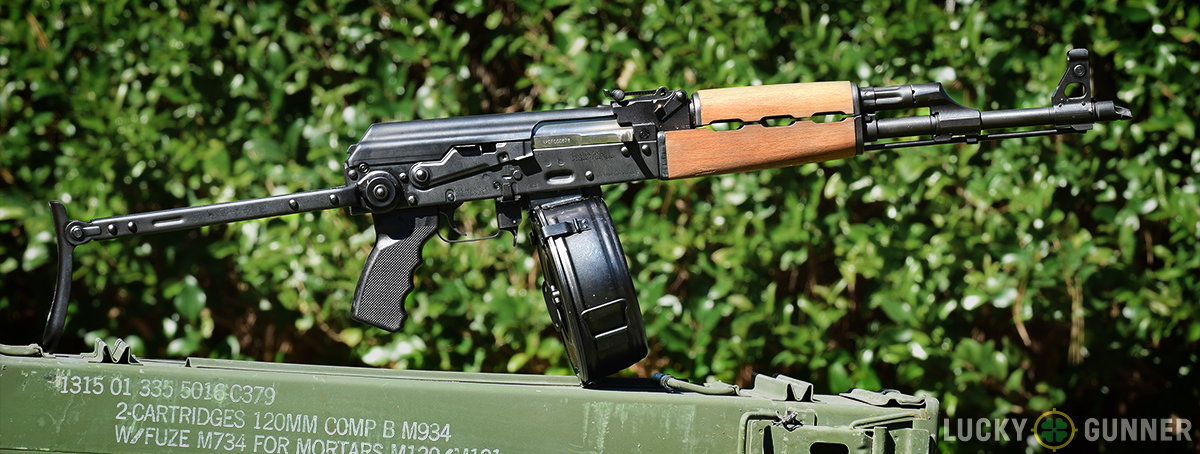
An additional Century-imported option is the Serbian PAP rifle. Featuring a more robust receiver and a stainless steel barrel, PAP rifle build-quality is above the majority of AK rifles on the market. They use standard AKM magazines and pistol grips, but that’s where the similarities to AK rifles end.
Yes, they operate identically to AKM or AK-47 carbines, but when Serbia was still Yugoslavia, the military decided to modify the Kalashnikov design to better suit their armed forces’ needs. This presents an issue in terms of cost of ownership, and aftermarket parts availability.
While the most important accessory, magazines, are interchangeable; handguards, dust covers buttstocks and side rails aren’t. Shooters who are happy to use their AK as it comes from the factory, can safely buy the PAP, a few magazines and be happy.
Though anyone who wants access to the robust AK accessory market, should steer clear of this variant, because most AK parts are either incompatible or require extensive modification to fit the rifle.
Hungarian AK63D
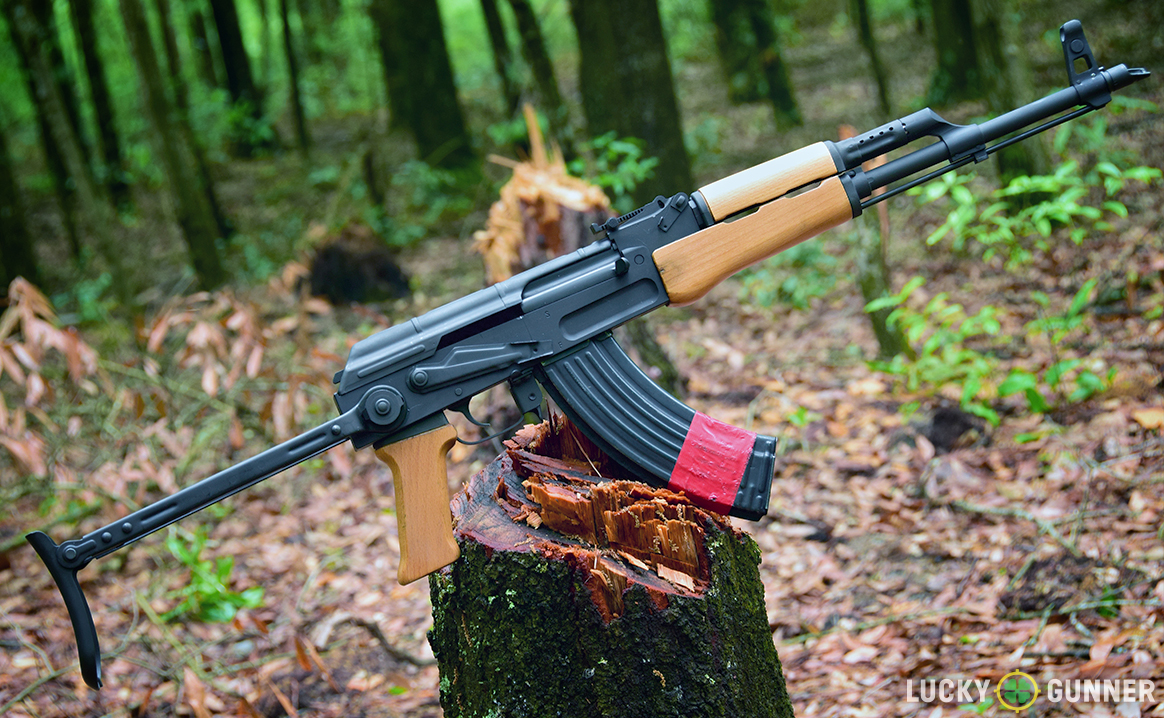
Another classic option also imported by Century Arms, is their new AK63D rifle. This rifle is built from a stamped receiver Hungarian AK63 parts kit on a new Century C39v2 milled receiver. It may be a franken-rifle, but it’s extraordinarily well-built, and uses stamped AK furniture. So kitting out the rifle won’t require special parts.
The only difference between Hungarian rifles and other country’s AKs, is the pistol grip and muzzle brake. While the Century 63D lacks the tank-style brake commonly found of AMD-65 Hungarian side-folding select-fire rifles, it still retains the odd pistol grip design.
Thankfully, shooters who don’t find the odd grip appealing, can simply replace it with any standard AKM pistol grip. The stock on these rifles, however is an underfolding type, which actually requires a special receiver or rear trunnion.
Chinese MAK 90, Egyptian Maadi
Two other semi-common rifles are Egyptian Maadi rifles and Chinese MAK 90 carbines. The Egyption rifles are identifiable by their arabic inscriptions, but are otherwise basically the same as any other AKM carbine. Some models, like the ARM variant, use a thumbhole stock, but are far less common.
As for the Chinese MAK 90 or Type 56 rifles, these rifles are as near to a Russian-built AK carbine as anything ever imported. Earlier models featured standard AK stocks, pistol grips and even iconic folding spike bayonets. Later models did away with these features in favor of a thumbhole stock and featureless barrel (one lacking a bayonet lug and threaded muzzle) to comply with an importation ban on Chinese weapons.
While a very capable rifle, they are cost prohibitive since they haven’t been imported into the united states since 1994, when the assault weapon ban listed them by name. These rifles only differ from standard AKM carbines in their inclusion of a hinged spike bayonet and hooded front sight post.
American AKs
Shooters who value modularity above all else will be happy to know many all-American AK rifle-makers exist who produce unconventional, but more versatile AKM carbines.
DDI AK47
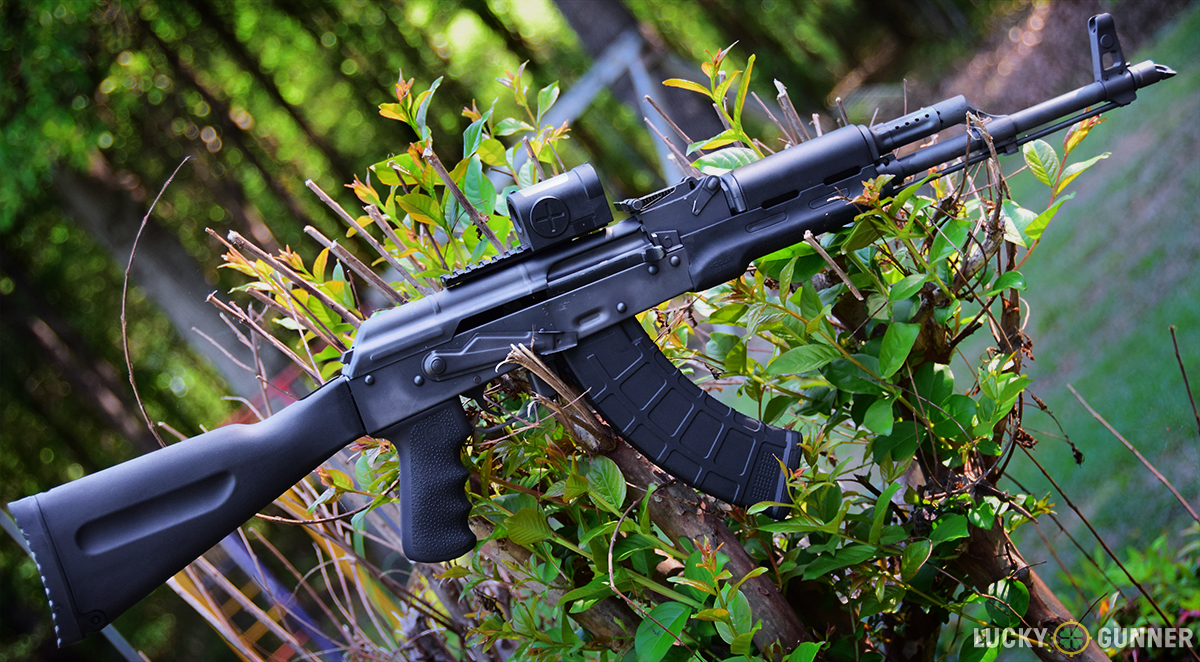
The first, is a relative newcomer to the AK market, Destructive Devices Industries, or DDI. They produce both a stamped and milled-receiver AKM rifle derived from Bulgarian SLR carbines. The former of which are available from the factory with American-made Hogue rubber furniture and XS big-dot iron sights – a far cry from the post and notch standard featured on all other AK rifles.
The other thing that separates DDI from other makers is the finish they use on their rifles. A result of a proprietary super-heating process, DDI carbines have a flat dark grey outer-finish called Fenocite. The surface is ultra-hard and resists most solvents as well as rust.
Century Arms C39v2
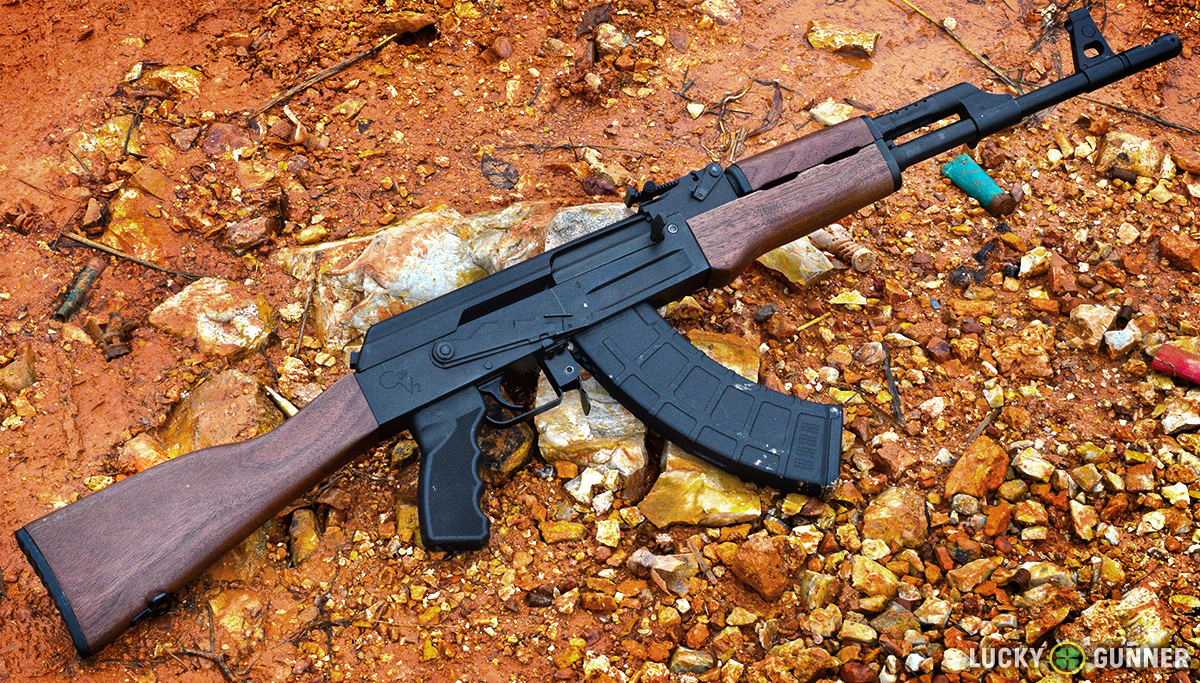
When it comes to unconventional AKs, the Century C39v2 wrote the book. Utilizing a strange amalgamation of milled-receiver-specific and stamped-specific parts, the C39v2 is a strange Chimera of an AK.
That said, it also has one of the smoothest actions, safety levers and magazine release paddles available on AK rifles. It also ships with American-made Magpul AK PMAGs, one of the best domestic AK magazines in existence.
Century also produces a stamped version, the RAS-47, that differs from the C39 by the inclusion of a Century-specific side rail, use of AKM furniture and a more traditional slant muzzle brake.
The AK Golden Age
20 years ago buying an AK was a crap shoot; most gunsmiths wouldn’t touch them, and aftermarket support was basically non-existent. Today, thanks to the sunset of the Federal Assault Weapons Ban and the age of Youtube, AK rifles are more popular than ever.
Due to the ever-increasing market size of AK vendors, most companies that produced sub-par products have gone the way of the dinosaur. Which is obviously great news for the consumer, as they now have a substantially lower risk of purchasing a lemon. Those that do, benefit from the increasing popularity of heavily-warrantied products that social-media-savvy consumers can enforce with a single photograph. The days of ultra-cheap AKs may have ended, but the era of quality domestically-built ones is only just getting started.
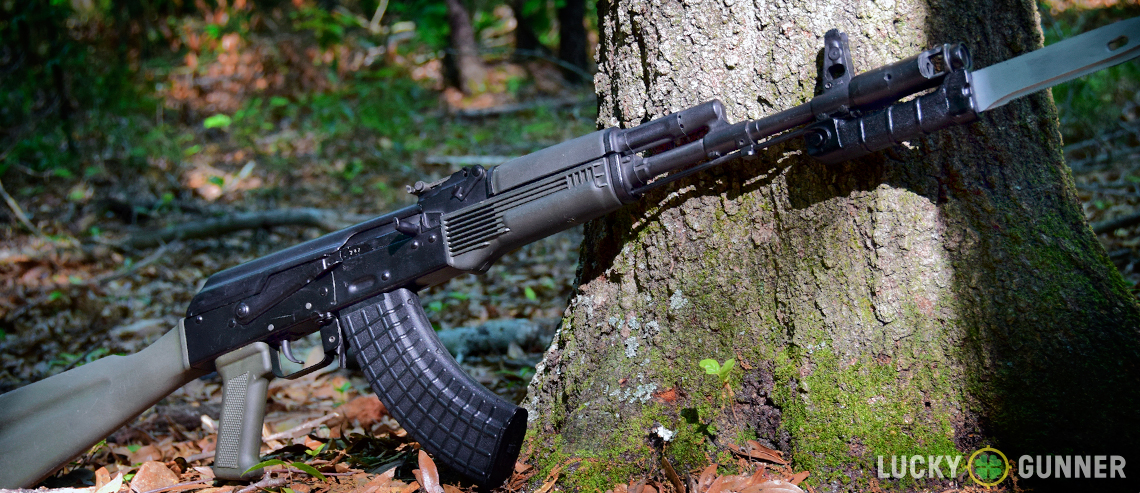


MAK90s are cost prohibitive….not imported since 1994…..I purchased mine in 1994 for $229…of course it now sports a threaded barrel and different stock than the cheap craptacular thumbhole stock the Chinese shipped with it.
Any discussion of the AK in America that did not include Jim Fuller & Rifle Dynamics is probably not worth reading. Jim is arguably one of, if not THE most respected & knowledgeable AK builders in this hemisphere. Krebs a close second. Most of this article could be gleaned from google, but the info on DDI was spot on, and they look to soon be a serious force to be reckoned with.
How many innocent victims have already and will in the future die because shooters use the guns and ammo sold by this company?
To be fair to the author this is too large of a topic for a small article to be much more than a taste bud wetter. The ak has simply had too many different renditions imported over the past 30yrs to cover them all, let alone in detail.
The article is a little misleading for noobs though. For instance the mak 90 comments infer that it’s identical to a Russian original. The mak 90 came in both milled and stamped. The milled copied the Russian milled, though some have reported cracked receivers possibly from poor steel quality. The stamped is China’s own design, it has a 50% thicker receiver and a different gas tube. I’ve got a stamped, it’s alright, it takes std butt stocks with some filing down.
The Serbian pap came in a few different generations, the first had feed issues, and some used 1mm receivers with side rail, some 1.5mm rpk no rail. You can’t make a general recommendations for them as there’s a 1 lb difference between them. That might not matter off a bench or blazing through 75rd drums in a gravel pit. An extra # can be a killer chasing whitetail through swamps all day in snow pushing brush though. Ak’s vary from 7-11#’s empty, milled and rpk pattern variants are more solid and typically smoother, but is this worth the physical strain which leads to fatigue, causing instability when actually needed? That’s a personal preference choice depending on what you intend to do with and expect from it.
As far as accuracy goes… The only way to truly know a rifles potential is handloading. Ak’s eat brass by design, do to a violent ejection, making brass saving difficult. Not to mention getting your neighbors permission to send a search party into his estate to find it.
The vepr is a beautifully crafted rifle, I’ve got 2, fit and finish is impeccable, very smooth action, trigger is decent. One is in 5.45 with a 20″ fluted barrel, and x4 scope. I also have a century made wz. 88 Tantal in 5.45(internet says it’s no good). I’ve got trouble hitting a soda can at 100yd with the vepr from bench, yet with my tantal with irons I’ve already hit over 80% on an 1.5″ steel fence post at that distance kneeling. So though I’d like to say the refinements of vepr lead to increased accuracy, I can’t and it weighs 3lbs more. My yugo m70ab2 underfolder has performed well scoring a 1moa at 300yd 3 rd group and friend consecutively put 2 rds on a 2.5″ steel at 200yds, his 2nd and 3rd shots with that rifle. My Psl 54 put 10rds in a pop can sized group at 300yds.
So ak’s can be accurate, but may vary from 1-6 moa between supposed identical guns. My wsar(with rs adjustable trigger) shoots as well as my milled Bulgarian arsenal, though not as smooth or solid feeling which is subjective. Don’t get hung up on paper group size, find somewhere to do undefined range shooting on steel and you discover that you can make hits with practice just as easily as with an ar(I’ve got both, among other designs).They all are reliable, fun and drop deer, good enough for me.
For advice on buying an ak I’d first narrow the options. First what’s the purpose for it and budget, by budget I mean for cost of ownership not just price of gun. By establishing these you can move on to caliber, they are chambered in 7.62×39, 5.45, .223, .308, 7.62x54r, 8mm, and even a few 30-06.
You require a caliber that will accomplish your task, however when you stray from 7.62 & 5.45 x 39 mags become scarce, pricey, lower capacity and less reliable. Mags, ammo, and sights need to be in the budget. Given the drawbacks of more powerful chamberings, if you don’t need them it may be better to avoid them. For hunting, caliber & ammo may be restricted. In my state it’s .22 centerfire with expanding bullets for deer, so 5.45 is out, leaving 7.62×39 as the best choice inside 200yds.
Once caliber is selected, accessories need consideration. If you want it original and open sights, then get whatever you want. If you are scoping it there’s 4 basic options, side rail, dogleg style, sight base rail, and handgaurd. You can have stocks fold under, right, left, and/or collapsible. Handgaurds can have rails for anything. Most models have an aftermarket, but the std akm stamped 1mm thick receiver versions in 5.45 & 7.62×39 have the most options, and are the lightest.
Most US models now come with a tapco g2 trigger, they are usually decent, though some have a lot of travel. If get one with a bad trigger(older non-tapco wasr 10’s were horrible), besides tapco there’s Texas triggers and redstar arms adjustable trigger. They install easy and range from $20-$80. Polishing is ok but don’t grind on them like some YouTubers, the hardening isn’t deep. The also make smoother springs if you’re really picky.
Good discussion and accurate info. Be warned though, I purchased the top of the line Arsenal Sam7Sf milled and received the brand new rifle with front sights that were canted to the right…something expected from century or a WASR maybe…and you would think after spending $1400 on an AK the company would apologize and quickly fix it…I was shocked when their sole contact and customer service rep, Jennifer, accused me of not being able to zero the weapon and doing something wrong. She reluctantly said I am free to ship it to them on my own dime so they could take a look at it…after this experience I didn’t trust them and would rather have a local trusted gunsmith fix the rifle, but she refused to let me speak to a technician, manager or anyone other than herself. I’ve never felt less respected by a company, definitely stay away from Arsenal, Rifle Dynamics and Krebs would be much better and proven safe investments.
What do you think of SKS as a cheaper alternative to the AK ?
i would say that with the current prices for a good sks, you might as well spend a bit more and get an AK. That being said, i LOVE my Type 56 5-digit ghost Sino/Soviet sks
I traded my Romanian WASR-10UF for a nice Remington A3/’03. All my shooting buddies thought I was nuts for buying the thing in the first place, but using iron sights and surplus, I could smack the gong at 300 yards. Nice thing about it is how it folded up nicely for indoor use.
In the $600-$700 range would the c39v2 be a better choice than most?